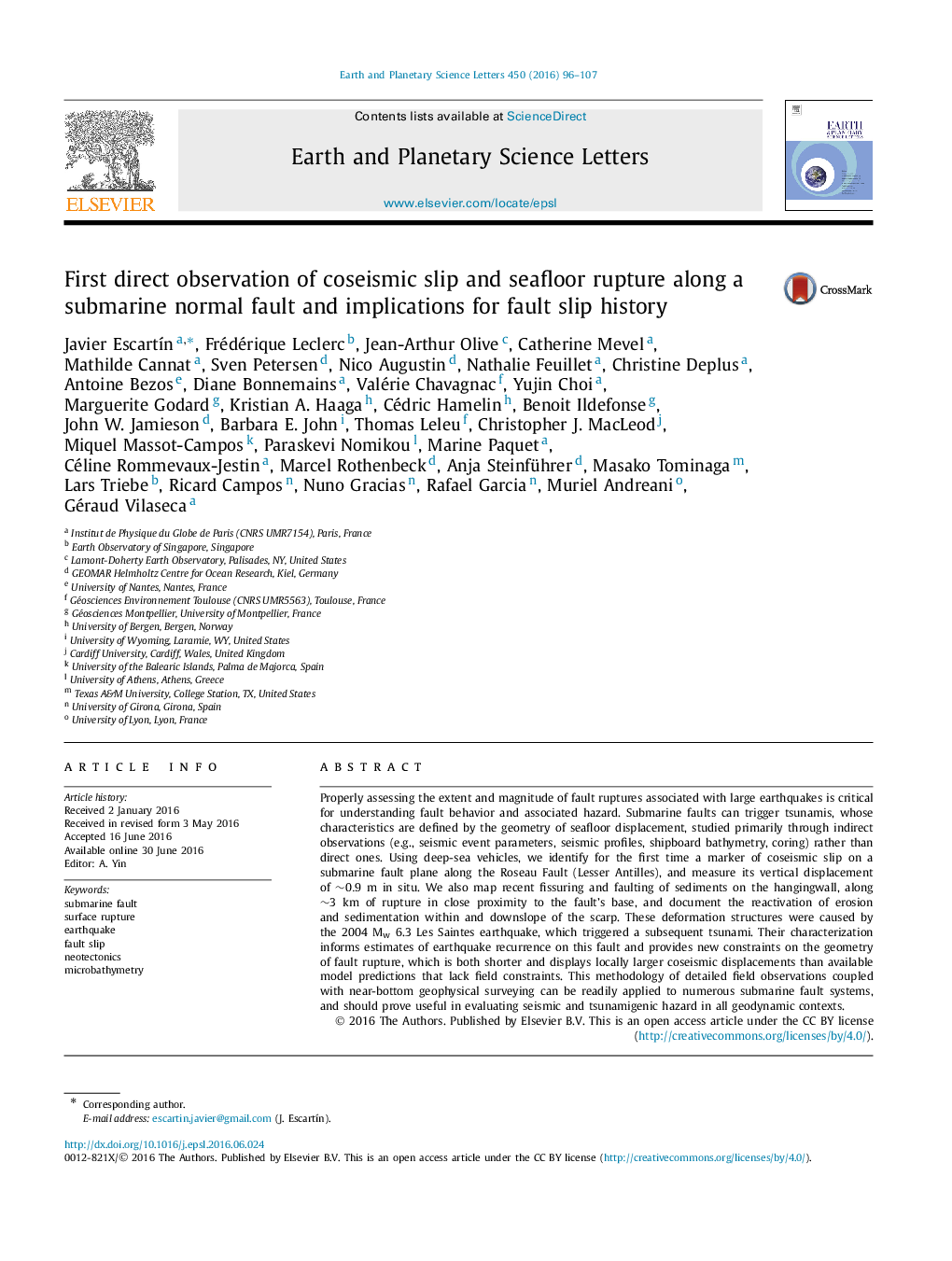| کد مقاله | کد نشریه | سال انتشار | مقاله انگلیسی | نسخه تمام متن |
|---|---|---|---|---|
| 6427291 | 1634706 | 2016 | 12 صفحه PDF | دانلود رایگان |
- Coseismic displacement documented and measured in a submarine fault following a 2004 Mw 6.3 event.
- Coseismic deformation of hanging wall with cracking and fissuring of seafloor sediments.
- High-resolution mapping, photomosaicing, and 3D video-derived terrain models to constrain earthquake rupture at seafloor.
Properly assessing the extent and magnitude of fault ruptures associated with large earthquakes is critical for understanding fault behavior and associated hazard. Submarine faults can trigger tsunamis, whose characteristics are defined by the geometry of seafloor displacement, studied primarily through indirect observations (e.g., seismic event parameters, seismic profiles, shipboard bathymetry, coring) rather than direct ones. Using deep-sea vehicles, we identify for the first time a marker of coseismic slip on a submarine fault plane along the Roseau Fault (Lesser Antilles), and measure its vertical displacement of â¼0.9m in situ. We also map recent fissuring and faulting of sediments on the hangingwall, along â¼3 km of rupture in close proximity to the fault's base, and document the reactivation of erosion and sedimentation within and downslope of the scarp. These deformation structures were caused by the 2004 Mw 6.3 Les Saintes earthquake, which triggered a subsequent tsunami. Their characterization informs estimates of earthquake recurrence on this fault and provides new constraints on the geometry of fault rupture, which is both shorter and displays locally larger coseismic displacements than available model predictions that lack field constraints. This methodology of detailed field observations coupled with near-bottom geophysical surveying can be readily applied to numerous submarine fault systems, and should prove useful in evaluating seismic and tsunamigenic hazard in all geodynamic contexts.
Journal: Earth and Planetary Science Letters - Volume 450, 15 September 2016, Pages 96-107
